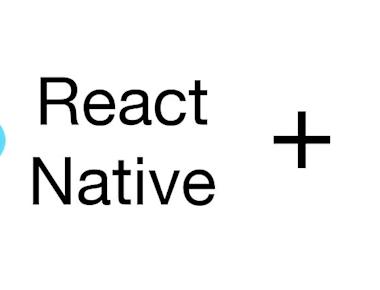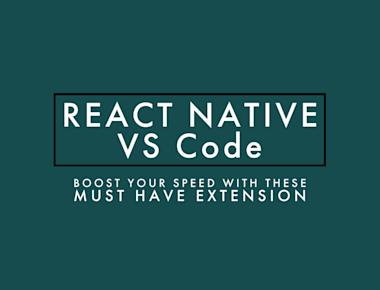
When to select React Native vs Capacitor js

React Native vs. Capacitor JS: A Comprehensive Comparison
Mobile app development has evolved significantly in recent years, offering developers a plethora of tools and frameworks to choose from. React Native and Capacitor JS are two popular options that facilitate the development of cross-platform mobile applications. While both have their strengths and weaknesses, understanding their differences is crucial for making an informed choice. In this article, we’ll delve into a detailed comparison of React Native and Capacitor JS to help you decide which framework is best suited for your project.
1. Introduction:
React Native, developed by Facebook, is a JavaScript framework for building native mobile applications for iOS and Android platforms. It enables developers to write a single codebase that can be used on both platforms, which significantly reduces development time and costs.
Capacitor JS, on the other hand, is an open-source framework developed by the Ionic team. It allows developers to build cross-platform mobile apps using web technologies (HTML, CSS, and JavaScript) while providing access to native device features.
Comparison
| Feature | React Native | Capacitor JS |
|---|---|---|
| Language | JavaScript, TypeScript | JavaScript, HTML, CSS |
| UI Components | Abundant pre-built | Fewer pre-built, customizable |
| Performance | Good, native bridge | Web-centric, improving |
| Native Features Access | Extensive plugin ecosystem | Growing plugin ecosystem, custom plugins |
| Community & Ecosystem | Large and active community | Growing community |
| Learning Curve | Familiar for React devs | Easier for web developers |
| Development Environment | Feature-rich, integrated | Flexible, but less mature |
| Deployment | Complex, well-documented | Simplified, unified build |
| Popularity & Adoption | Widely adopted by major companies | Gaining traction |
2. Language and Development Approach:
React Native: React Native primarily uses JavaScript or TypeScript, offering a robust ecosystem of libraries and tools. It uses a combination of JavaScript and native code to render components, achieving a high level of performance. The development approach is component-based, similar to React for web applications.
Capacitor JS: Capacitor also uses web technologies, such as HTML, CSS, and JavaScript, for building apps. It leverages web views for rendering and adopts a more web-centric approach, making it easier to adapt existing web applications into mobile apps.
3. UI Components:
React Native: React Native offers a wide array of pre-built UI components that mimic native components, ensuring that your app looks and feels like a native application. Developers can use these components or create custom ones using React Native.
Capacitor JS: Capacitor does not provide as many pre-built UI components as React Native. Instead, it relies on web technologies and allows developers to use web components and libraries for creating user interfaces. This can lead to a more customizable but potentially less native-looking UI.
4. Performance:
React Native: React Native employs a bridge to communicate with native modules, which can sometimes lead to performance bottlenecks. However, it provides a good balance between performance and cross-platform development, and many well-known apps have been developed with React Native.
Capacitor JS: Capacitor’s reliance on web views may result in slower performance when compared to React Native in certain scenarios. However, this is improving with each release, and the performance gap is narrowing.
5. Access to Native Features:
React Native: React Native has a vast ecosystem of community-driven and third-party plugins, offering access to a wide range of native device features. This makes it easier to integrate device-specific functionalities into your app.
Capacitor JS: Capacitor provides a similar mechanism for accessing native features but may have a smaller ecosystem of plugins compared to React Native. However, it makes it simple to develop custom plugins when necessary.
6. Community and Ecosystem:
React Native: React Native has a large and active community, resulting in extensive documentation, numerous libraries, and a wealth of resources to help developers. This vast community contributes to the framework’s stability and growth.
Capacitor JS: While Capacitor’s community is growing, it is not as extensive as React Native’s. This may lead to limited resources, but the Ionic team is actively working to improve documentation and expand the community.
7. Ease of Learning:
React Native: If you are already familiar with React or JavaScript, learning React Native can be relatively straightforward. Its component-based approach and extensive documentation make it an accessible choice for developers.
Capacitor JS: Capacitor may be more accessible to developers who are experienced with web development, as it leverages web technologies. It has a shallower learning curve for web developers, especially those already using the Ionic framework.
8. Development Environment:
React Native: React Native provides a straightforward development environment with features like hot-reloading and a rich set of debugging tools. It integrates seamlessly with popular code editors like Visual Studio Code.
Capacitor JS: Capacitor is agnostic when it comes to development environments, allowing developers to use their preferred tools. However, it may not have as mature of a tooling ecosystem as React Native.
9. Deployment:
React Native: Deploying React Native apps can be more complex due to differences in the build process for iOS and Android. But it offers a robust and mature set of tools and documentation for deployment.
Capacitor JS: Capacitor simplifies the deployment process by providing a unified build configuration and clear instructions for app store submission. It streamlines the deployment process, making it more accessible for developers.
10. Popularity and Adoption:
React Native: React Native has been around longer and is widely adopted by many well-known companies, including Facebook, Instagram, Airbnb, and Tesla. It is a trusted choice for building mobile apps.
Capacitor JS: Capacitor is relatively newer but has gained traction in the Ionic community and is being adopted by startups and small to medium-sized businesses.
Who Should Use React Native?
React Native is a robust and mature framework that offers several advantages for developers seeking to build cross-platform mobile applications. It’s a popular choice for a wide range of projects and can be particularly suitable for the following scenarios:
Experienced JavaScript and React Developers: If you or your team have prior experience with JavaScript and React, you’ll find React Native to be a natural extension of your skills. It uses similar component-based architecture and language, making it easier for developers with this background to transition to mobile app development.
Projects Requiring Native-Like User Interfaces: React Native provides an extensive library of pre-built UI components that mimic native mobile elements. This makes it an excellent choice for applications where the user interface should closely resemble native app designs. You can achieve this without extensive custom development, saving time and effort.
Performance-Critical Applications: For applications where performance is a top priority, React Native’s native bridge can be beneficial. Although it introduces a bridge between JavaScript and native code, which can result in performance bottlenecks in some cases, React Native’s performance is generally good and can meet the needs of most projects.
Access to a Wide Range of Native Features: React Native boasts a vast ecosystem of community-driven and third-party plugins, allowing you to access a wide range of native device features. This is valuable when your app requires integration with device-specific functionalities, such as GPS, camera, or sensors.
Strong Community and Ecosystem Support: React Native has a large and active community, resulting in extensive documentation, numerous libraries, and a wealth of online resources. If community support and a mature ecosystem are important for your project, React Native is a solid choice.
Large-Scale, Mission-Critical Projects: React Native is widely adopted by major companies like Facebook, Instagram, Airbnb, and Tesla. It’s a trusted framework for building large-scale and mission-critical applications, making it ideal for established organizations with substantial app development needs.
Who Should Use Capacitor JS?
Capacitor JS is a relatively newer framework that simplifies mobile app development by leveraging web technologies. It may be a more suitable choice for specific scenarios and user profiles:
Web Developers Transitioning to Mobile: Capacitor is an excellent choice for web developers who are looking to transition into mobile app development. Since it relies on web technologies, including HTML, CSS, and JavaScript, it allows web developers to use their existing skills to build mobile apps quickly and efficiently.
Customizable User Interfaces: If your project requires highly customized user interfaces, Capacitor’s web-centric approach might be preferable. While it provides fewer pre-built UI components, it allows you to create highly customizable interfaces using web components and libraries.
Simplified Deployment and Submission: Capacitor simplifies the deployment process by providing a unified build configuration and clear instructions for app store submission. This can be beneficial for smaller teams, startups, or projects with tight timelines.
Growing Community and Adoption: While Capacitor’s community is still growing, it’s gaining traction within the developer community. If you prefer to work with a framework that is on the rise and you value flexibility in your development environment, Capacitor is a compelling choice.
Startups and Small to Medium-Sized Businesses: Capacitor is well-suited for startups and smaller businesses that want to create mobile apps with minimal overhead. It provides an efficient path to app development, especially for those already using the Ionic framework for web applications.
| Technology | Company |
|---|---|
| React Native | |
| Amazon. | |
| Airbnb | |
| Tesla | |
| Walmart | |
| UberEats | |
| Bloomberg | |
| Wix | |
| Skype | |
| Discord | |
| Capacitor JS | |
| Ionic | |
| GE Appliances | |
| CraftWork | |
| Firebase | |
| uPort | |
| MultiSafepay | |
| Namecheap | |
| Jefit | |
| Trail | |
| Precious Plastic |
If you are into facts and want to explore hand collected and fun facts, do visit our sister website: thefactbase.com, the mobile app for that website is build with React Native technology
Tags
Share
Related Posts




Quick Links
Legal Stuff



